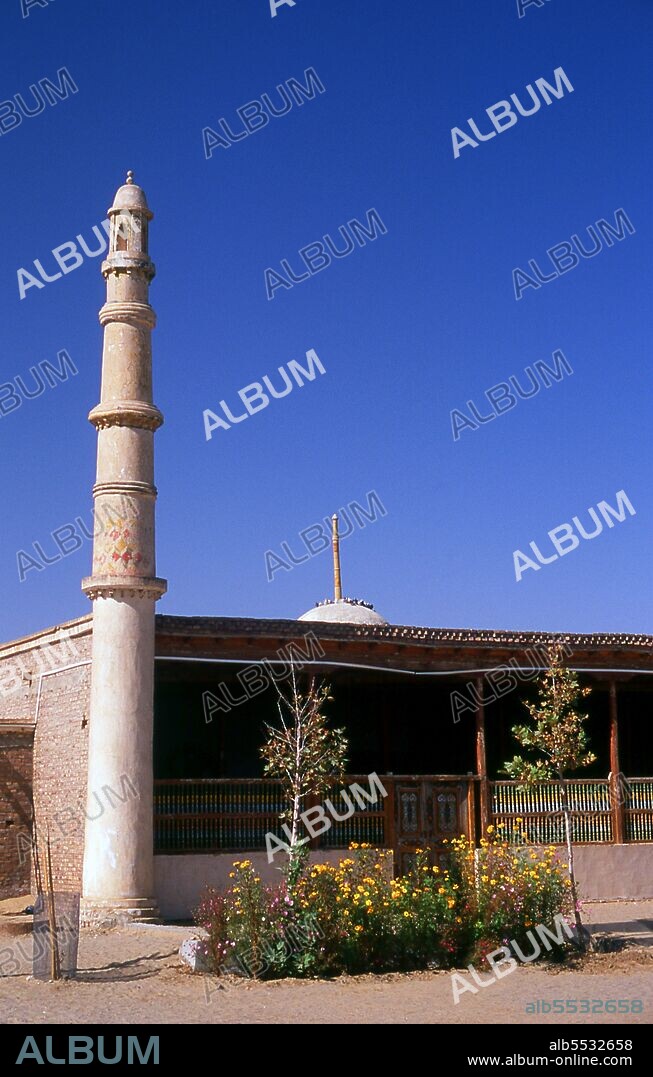alb5532658
China: The Imam Asim Mazar (shrine) in the desert near Khotan, Xinjiang Province.

|
Add to another lightbox |
|
Add to another lightbox |



Buy this image.
Select the use:

Title:
China: The Imam Asim Mazar (shrine) in the desert near Khotan, Xinjiang Province.
Caption:
The Imam Asim Shrine and other tombs can be found 23 kilometres from Khotan (Hotan) on the southern Silk Road. It is the site of a huge pilgrimage each May. Imam Asim was one of the first Islamic missionaries to visit this area. Khotan traces its history back at least as far as the 3rd century BCE, when the eldest son of the Indian emperor Asoka is said to have settled here. It was of great importance on the Silk Road, and is claimed to have been the first place outside China to have cultivated silk. It sits astride the Karakash or ‘Black Jade’ and Yurungkash or ‘White Jade’ Rivers, which here conjoin to form the Khotan Darya, and has been famous for its jade for well over two millennia. In times past trade routes crossed the desert to the north all the way to Kuqa, and as recently as 2007 this link has been re-established for the first time in centuries with the opening of a second Desert Highway leading to Aksu, distant some 424km to the north. In 1006 Khotan was conquered by Uighur Muslims from Kashgar, and since that time the city remains a very Uighur place.
Credit:
Album / David Henley/Pictures from History/Universal Images Group
Releases:
Model: No - Property: No
Rights questions?
Rights questions?
Image size:
3246 x 5090 px | 47.3 MB
Print size:
27.5 x 43.1 cm | 10.8 x 17.0 in (300 dpi)
Keywords:
ASIA PICTURES • ASIA • ASIAN IMAGE • ASIAN IMAGES • ASIAN PICTURES • ASIAN • BURIAL • CHINA • CHINE • CHINESE • DAVID HENLEY • DESERT • DESERTS • FUNERARY • GRAVE • HISTORIA UNIVERSAL • HISTORIA • HISTORICAL IMAGES • HISTORICAL PICTURES • HISTORICAL • HISTORY IMAGES • HISTORY PICTURES • HISTORY • HISTORY. • HOTAN • IMAM • ISLAM • ISLAMIC • ISLAMISM • KHOTAN • MINORITIES • MINORITY GROUP • MINORITY GROUPS • MINORITY • MUSLIM WORLD • MUSLIM • PORCELAIN • RELIGION • SACRED PLACE • SANCTUARY • SEPULCHER • SÉPULCRE • SHRINE • SILK ROAD • SILK ROUTE • SINKIANG • TOMB • UIGHUR • UYGHUR • XINJIANG
 Pinterest
Pinterest Twitter
Twitter Facebook
Facebook Copy link
Copy link Email
Email
